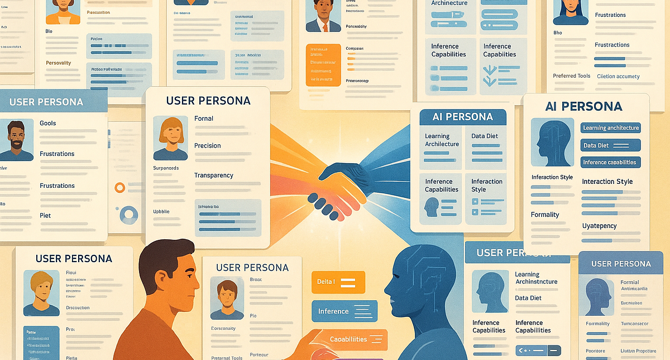Medium
1w
145

Image Credit: Medium
Beyond Demographics: Creating AI-Native Personas That Drive Product Decisions
- The Human-Computer Interaction Institute at Carnegie Mellon University focuses on Human-centered AI (HAI), which considers how AI can benefit people and society, and must address AI capabilities and their impact on users and stakeholders.
- In the age of AI, personas need to include AI as a participant in the user journey, analyzing AI by its 'demographics' such as strengths, weaknesses, and interaction habits.
- Designing AI-native experiences requires mapping parallel AI journeys, understanding when AI should lead, when humans should lead, and how they can collaborate effectively.
- AI demographics include learning architecture, data diet, inference capabilities, interaction style, and rate of adaptation, influencing how AI systems function.
- Various archetypal relationships between humans and AI systems emerge, including AI as a background enhancer, collaborative partner, autonomous agent, and learning apprentice.
- Effective AI-native product experiences involve creating domain-specific AI personas tailored to particular use cases, much like how human personas are tailored across different products.
- The future of product design lies in integrating human and machine intelligence effectively to design synchronized product-service ecosystems that leverage the strengths of both AI and humans.
- Creating dual personas for both human users and AI systems can lead to more effective, intuitive, and synchronized product-service ecosystems in the evolving landscape of AI-native design.
- Successful companies in the AI-native design era will understand how to build productive, evolving relationships between humans and AI by recognizing the qualities and weaknesses of each.
Read Full Article
8 Likes
For uninterrupted reading, download the app